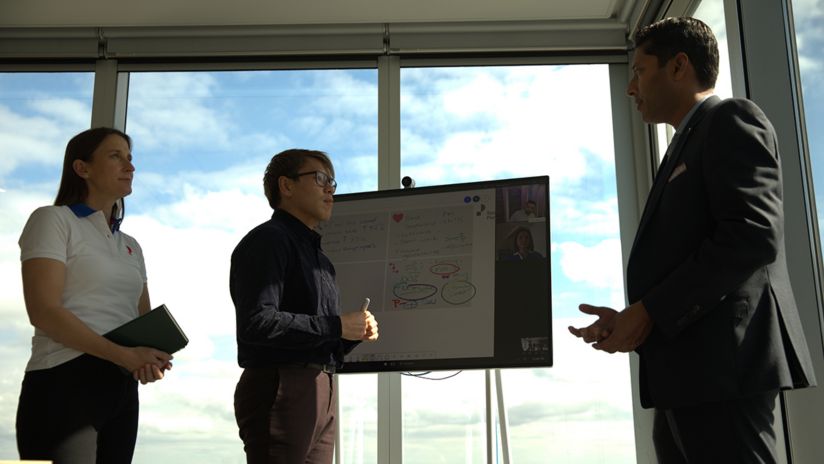3G Network closure – what the industry is saying
Read a respected industry stakeholder's thoughts on making the transition from 3G.

Following on from recent articles that have addressed why it is important to ensure you have a 3G migration plan now and how Telstra Purple is able to assist with this transition, we interviewed a cross-section of respected industry stakeholders on their thoughts and experiences to date in making the transition.
To recap, Telstra announced in October 2019 that it would be closing down its 3G network on 30 June 2024. With less than two years remaining to transition to the 4G, 5G, LTE-M and/or NB-IoT networks, we know many customers are well on track while others may only be starting to plan.
Kevin Bloch is the founder and CEO of Bloch Advisory. Prior to founding Bloch Advisory, Kevin was Chief Technology Officer for Cisco for over 12 years. Kevin’s core specialisation is network technology underpinning infrastructure and services for telecommunications service providers, corporate and government organisations, and mobile operators. Kevin is ideally placed to provide his viewpoint on the current and future benefits that the 3G network closure and subsequent adoption of more advanced network technologies will have.
“From an IoT customer perspective, the benefit of migrating to 5G is not always obvious as most IoT devices use very little data so 3G is considered sufficient for both speed and latency. However, there are indeed several potential benefits in migrating to 5G including:
- Cost efficiencies: 5G is a global standard which means that endpoints (LPWAN modules) will likely become cheaper with more competition, a larger global market and greater economies-of-scale
- Longer life-cycle: as a global standard, investment in support and innovation of 5G technologies is most likely to continue longer than any other alternative
- Lower service cost: 5G enables greater spectrum efficiency and greater geographic coverage (than 3G or other LPWANs), thereby enabling the service provider to help keep its cost-to-serve lower
- Scale: LPWAN network technologies like NB-IoT and Cat-M offer customers a clear pathway to scale IoT deployments at much lower cost. This means more devices can connect and connect concurrently than with 3G. As volumes of smart water and electricity meters scale well into the tens of millions, they will have little impact on other IoT applications when on 5G.
- Lower carbon emissions: energy consumption of 3G is multiple times higher than 5G, so on a like for like basis, one can also expect reduced carbon emission
- Lower interference: cellular networks support IoT but do not exist solely for that purpose. By using cellular IoT based on 5G, your application is using a standardised technology in a licenced band that has much lower noise or interference and is continually enhanced, maintained, managed and supported based on multiple significant revenue streams
In summary, migrating to 5G could enable a longer IoT lifecycle with lower costs over time” concludes Bloch.
Hardware is a major component and consideration of this change, with many options available but also challenges, one being the global semiconductor shortage that has impacted many industries from automotive to consumer electronics. We spoke to Quectel, one of the world’s largest IoT Module manufacturers about their experience and learnings from other markets such as the US where 3G networks have already been closed.
“Our experience in markets across the globe is that the move to retire 3G is well underway,” says Michael Wallon, VP APAC & ANZ, Quectel Wireless Solutions, which as a global IoT solutions provider offers a wide portfolio of modules that provide attractive alternatives. “The pace at which this is moving depends substantially on individual market dynamics and regulations. In many markets, the benefits of freeing up spectrum currently used for 3G outweigh 3G’s remaining appeal to customers.”
“The retirement of 3G, which has been underway for several years, can be seen to provide an opportunity to move to a different, more efficient connectivity technology and Quectel has modules available to support the smooth migration of projects to other technologies. The latest range of modules offers greater efficiency, lower power consumption and can be accommodated in the same form factor as 3G modules for example” says Wallon.
“We see the 5G family in its widest sense ranging from Narrowband-IoT through Cat-M1 connectivity and ultimately to ultra-low latency, very high connection density 5G as offering more choice and greater efficiency for IoT use cases,” adds Wallon. “Certainly, we have developed our module portfolio with this in mind so we offer the most comprehensive portfolio of NB-IoT, Cat-M, 4G and 5G modules that can support the market’s migration as 3G sunsets gather speed. We’re ready to help customers in their product selections to help them optimize their devices for the next generation of IoT.”
Ultimately, the most impacted party is the customer. We checked in with a few customers to get a view of the progress they are making in their transition away from 3G, understand what benefits they have realised from making the change.
“The transition from 3G to 5G IoT technologies, such as Cat-M1 & NB-IoT, allows our customers to accelerate the adoption of better, more efficient digital technologies for a sustainable future,” explains Rumil Arada, Product Manager, Asia Pacific, Landis+Gyr. “By leveraging these newer technologies, Landis+Gyr has developed innovative products and future-ready solutions, enabling seamless migration from 3G to Cat-M1 and NB-IoT technologies, thus allowing customers to take advantage of these technologies much earlier.”
Demonstrating the long-term strategic thinking that is necessary to ensure successful migration, Landis+Gyr was, in 2017, one of the first organisations to utilise Telstra’s Cat-M1 network capabilities for its smart meter and smart grid applications. “Compared with 3G, Cat-M1 and NB-IoT technologies are more efficient, consume less power and [are] lower cost, for example for the modem. This ultimately leads to better business and environmental outcomes,” adds Arada.
We know that there are many other examples of customers successfully completing or being in advanced stages of implementing their migration plans and we look forward to hearing more from them in the coming months. Telstra’s team remains available to assist with any questions you may have. To discuss your specific needs please contact our 3G Migration team 3GEnterpriseMigration@team.telstra.com
For more information on the 3G shut down, please click here.
For coverage mapping/updates please go to Telstra’s IOT coverage maps

